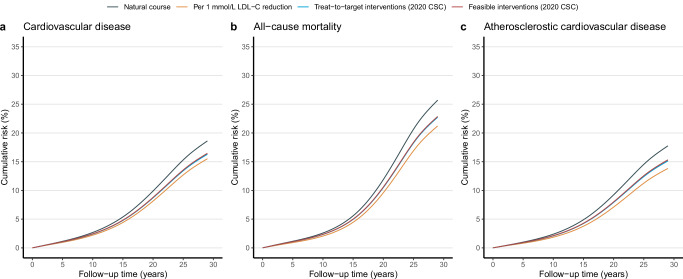Fig. 3. Estimated cumulative risk curves under hypothetical interventions.
Estimated cumulative risk curves comparing treat-to-target hypothetical interventions (i.e., per 1 mmol/L LDL-C reduction (orange), treat-to-target (cyan), and feasible interventions (dark red) with the “natural course” of no interventions (dark blue) for cardiovascular disease (a), all-cause mortality (b), and atherosclerotic cardiovascular disease (c) based on the Chinese Multi-provincial Cohort Study 1992-2020. Note: † Treat-to-target cholesterol-lowering intervention is based on cholesterol-lowering targets recommended by the Chinese Society of Cardiology in 2020 on LDL-C and non-HDL-C levels, i.e., for participants with diabetes at high cardiovascular risk, lower the LDL-C to < 1.8 mmol/L (70 mg/dL, i.e., a fixed level drawed from a uniform distribution with a upper bound of 1.8 mmol/L) or LDL-C reduction to > 50% from baseline whichever is the lowest and non-HDL-C to < 2.6 mmol/L (100 mg/dL, i.e., a fixed level drawed from a uniform distribution with a upper bound of 2.6 mmol/L); for participants without diabetes who are at moderate-to-high cardiovascular risk lower the LDL-C to < 2.6 mmol/L (100 mg/dL, i.e., a fixed level drawed from a uniform distribution with a upper bound of 2.6 mmol/L) and non-HDL-C to < 3.4 mmol/L (130 mg/dL, i.e., a fixed level drawed from a uniform distribution with a upper bound of 3.4 mmol/L); for participants at low cardiovascular risk, lower LDL-C to < 3.4 mmol/L (130 mg/dL, i.e., a fixed level drawed from a uniform distribution with a upper bound of 3.4 mmol/L) and a non-HDL-C < 4.2 mmol/L (160 mg/dL, i.e., a fixed level drawed from a uniform distribution with a upper bound of 4.2 mmol/L). ‡ Feasible treat-to-target cholesterol-lowering intervention, defined as 80% of eligible participants receiving the intervention at the follow-up examination over the study period.

